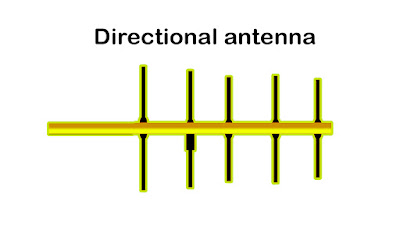Directional antenna refers to the transmitting and receiving electromagnetic waves is particularly strong on one or a few specific direction, while transmitting and receiving electromagnetic waves is zero or a minimum of an antenna in the other direction. Directional transmitting antenna is intended to increase the effective radiated power utilization, increase confidentiality; the main purpose of the use of directional receiving antenna to increase signal strength is enhanced anti-jamming capability.
Directional antenna used to cover a long street, and has the following advantages:
1, has a large forward gain
2, the signal, when the cell behind the cell it would potentially interfere with this feature is useful to inhibit later.
Also worth mentioning is the directional antenna can improve indoor coverage within the micro-cellular coverage in some buildings.
Directional antenna in the horizontal direction in Fig showed a range of angles of radiation, which is usually referred to directional. Like with omnidirectional antenna, beam width is smaller, the greater the gain. Directional antenna in a communication system generally used in communication distance, small-coverage, high target density, high frequency utilization environment.
We may also like this to think about the relationship between omnidirectional antennas and directional antennas: All will transmit a signal to the antenna in all directions around, you can receive the signals, directional antenna like antenna mask after a bowl-shaped reflective surface, signals can only be transmitted to the front, towards the back of the signal is blocked by the reflective surface and is reflected to the front, reinforced front signal strength.
